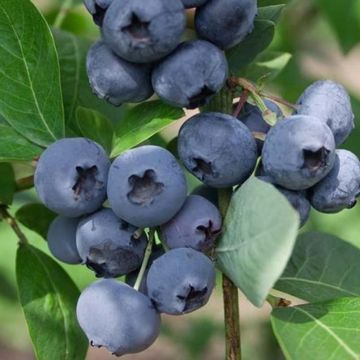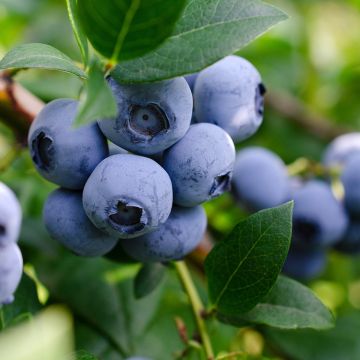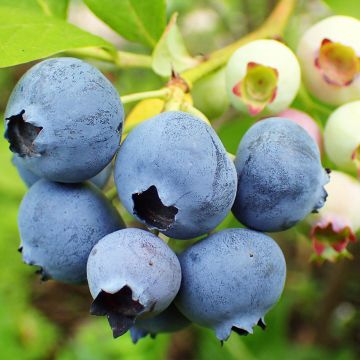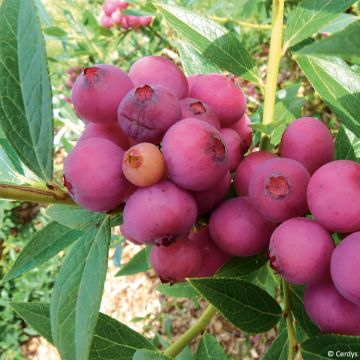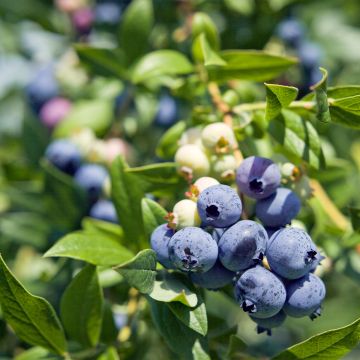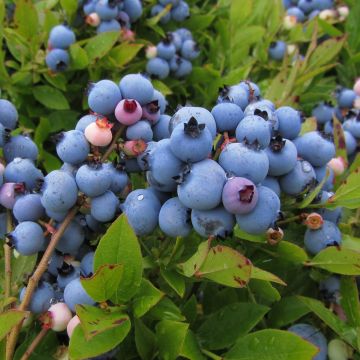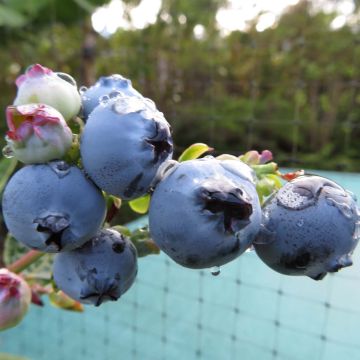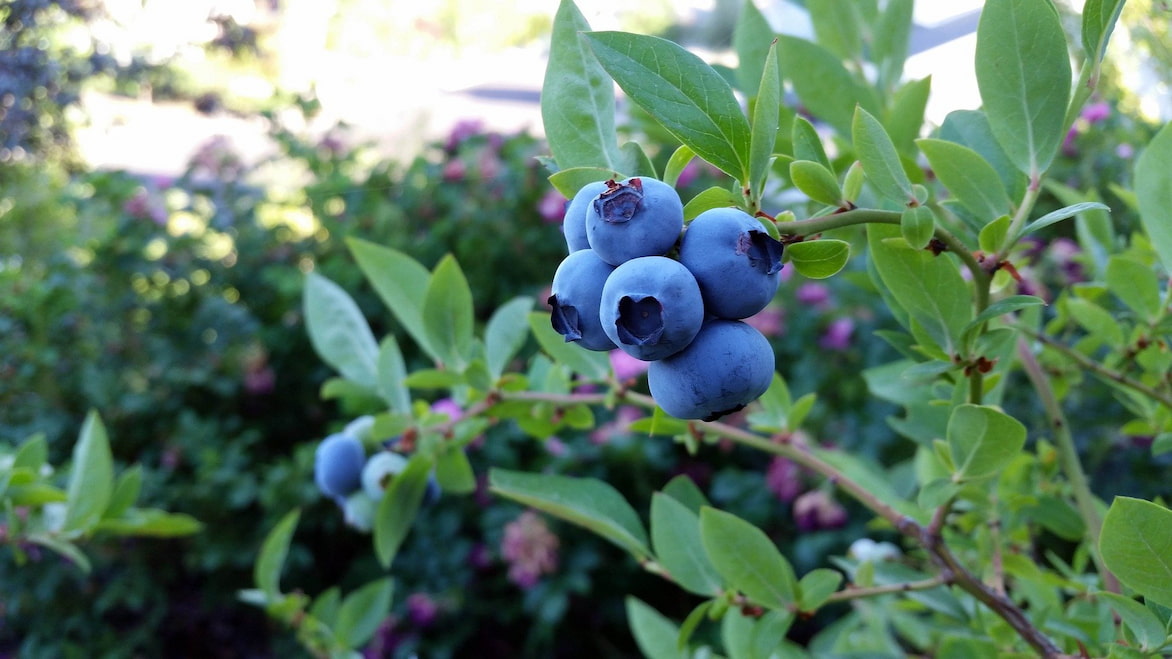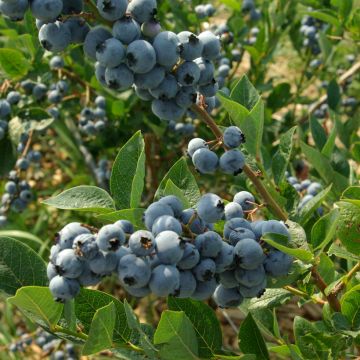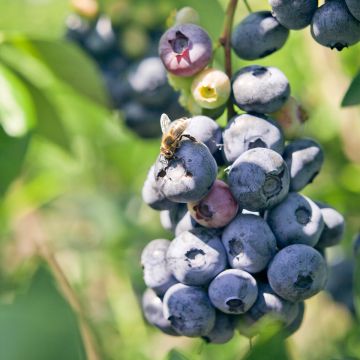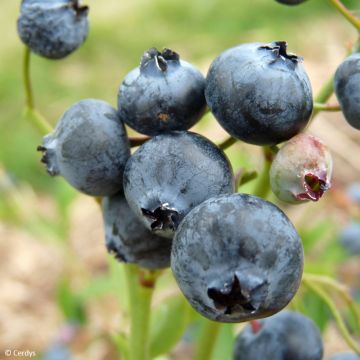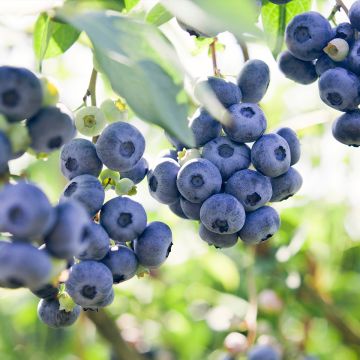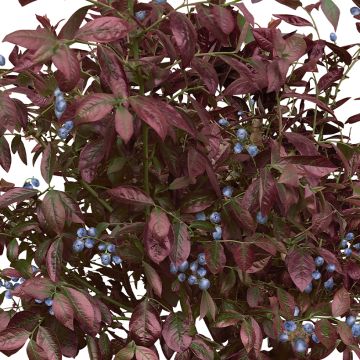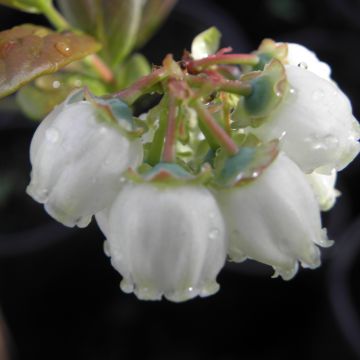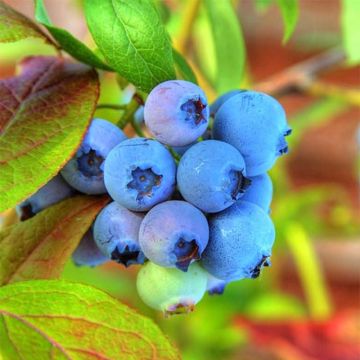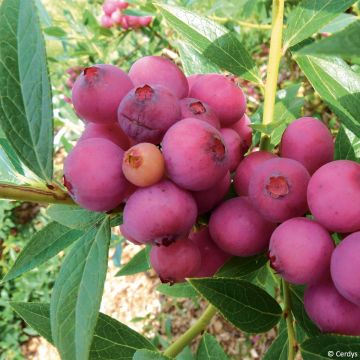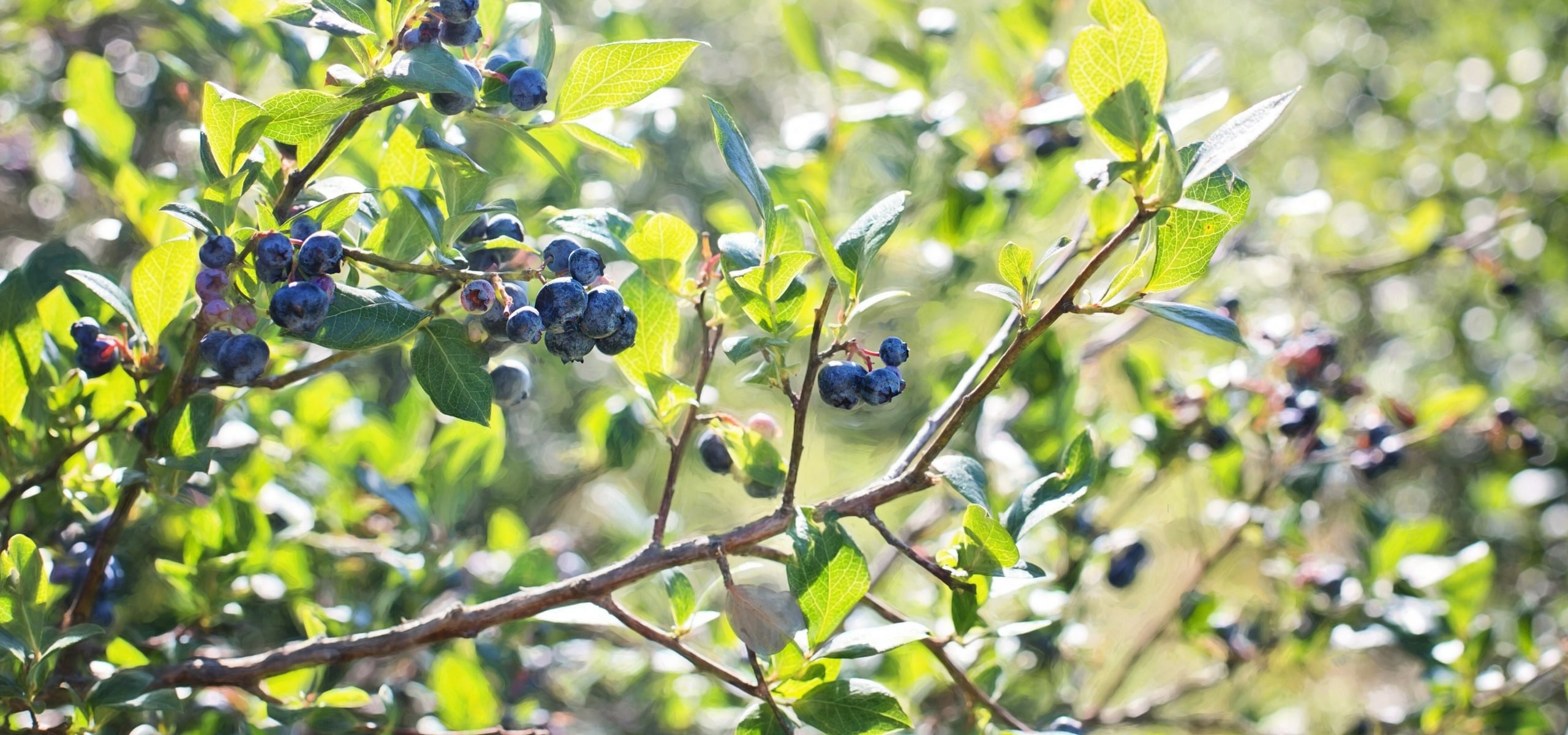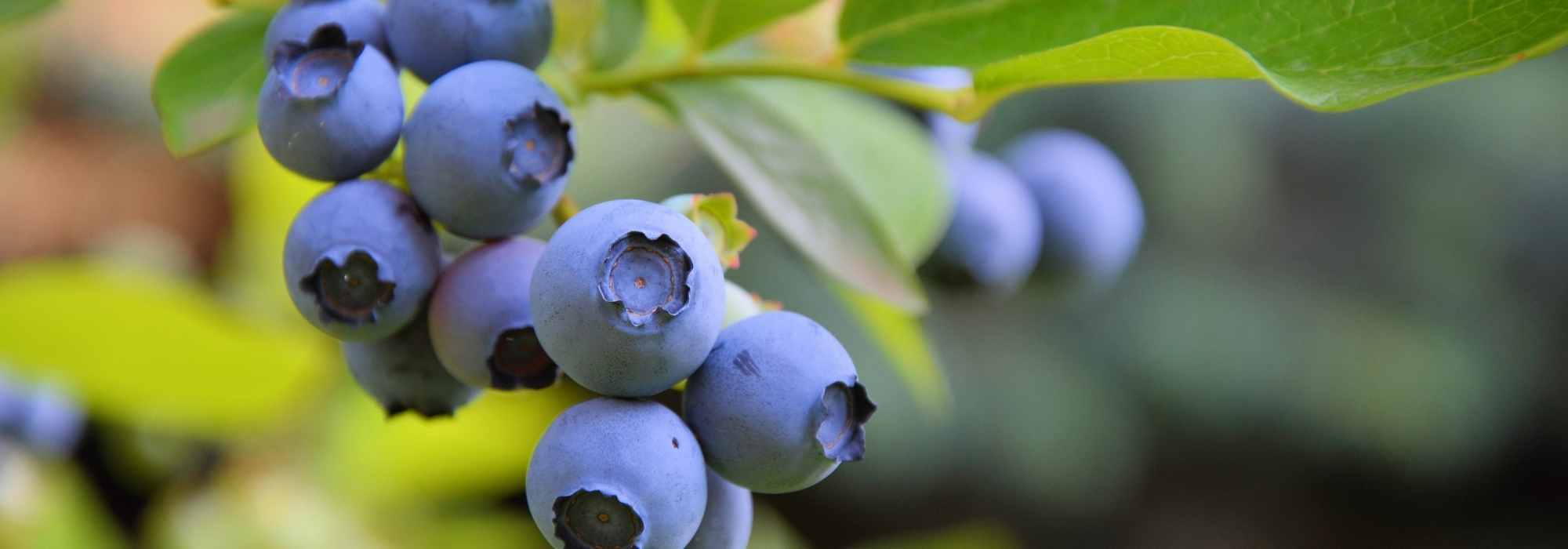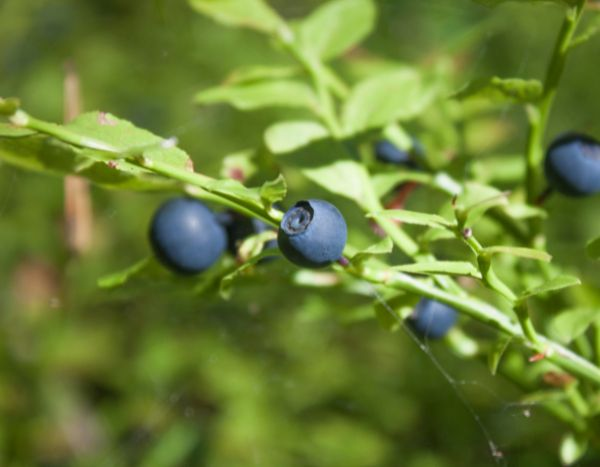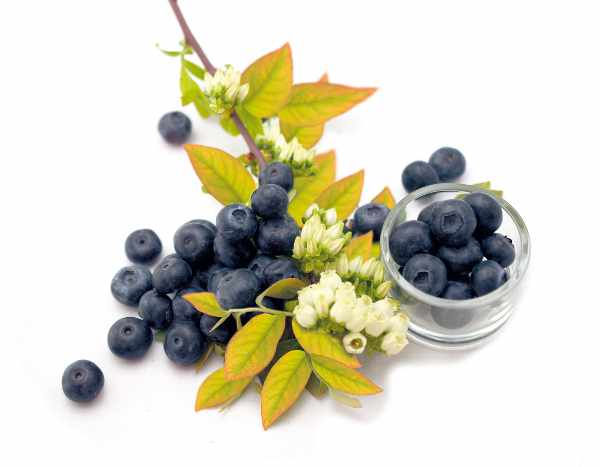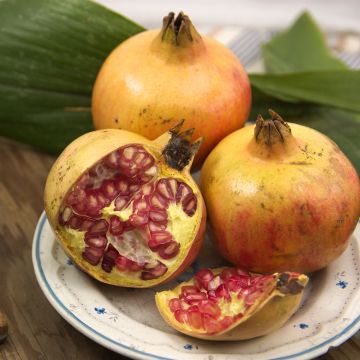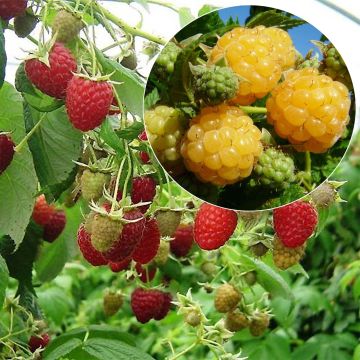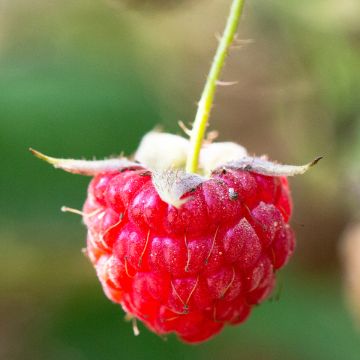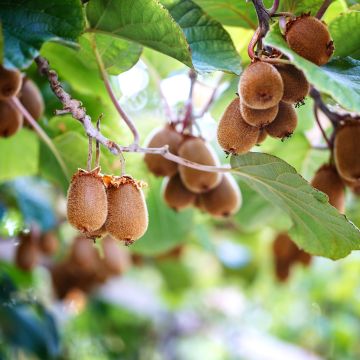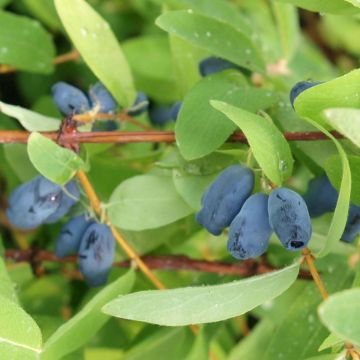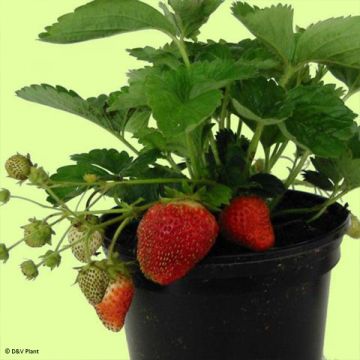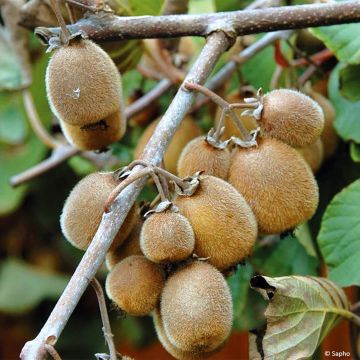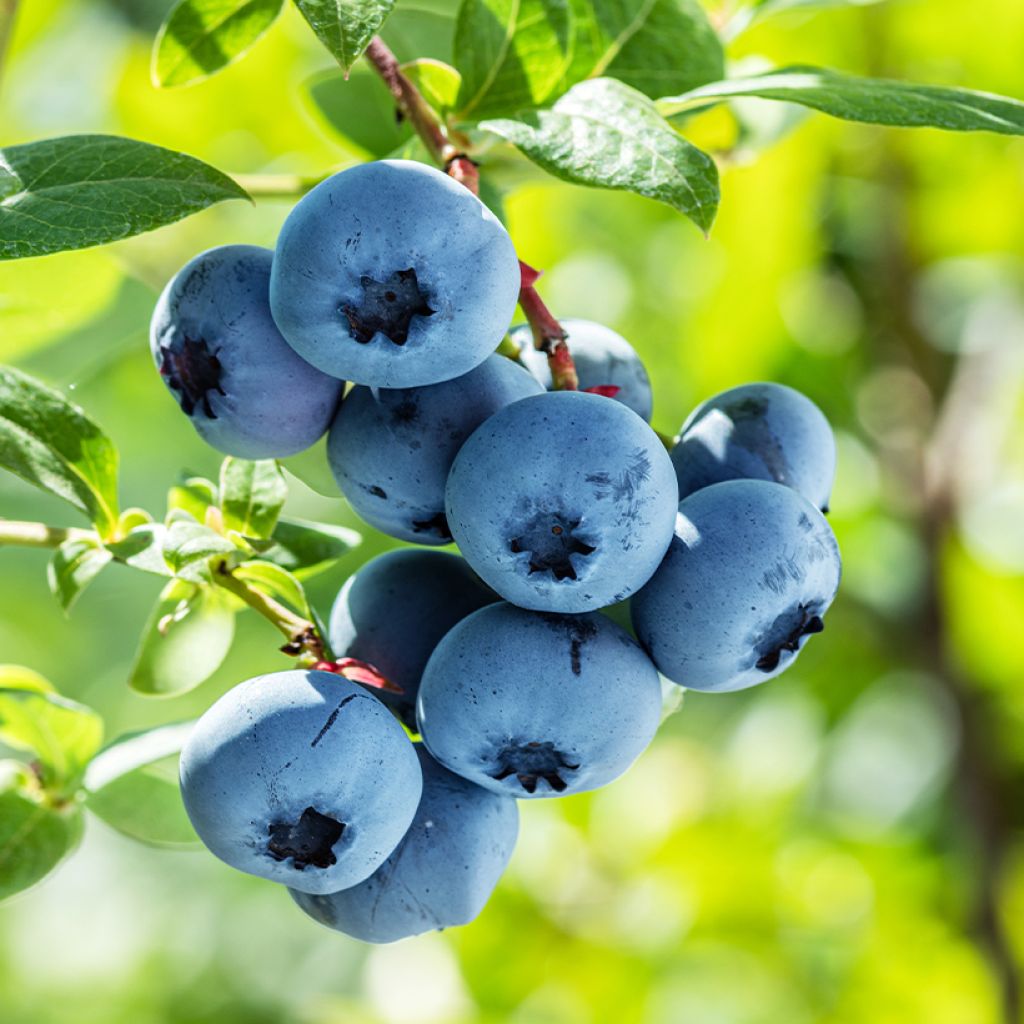

Blueberry Bluesbrothers - Vaccinium corymbosum
Blueberry Bluesbrothers - Vaccinium corymbosum
Vaccinium corymbosum Blues Brothers®
Highbush Blueberry, Blueberry
Special offer!
Receive a €20 voucher for any order over €90 (excluding delivery costs, credit notes, and plastic-free options)!
1- Add your favorite plants to your cart.
2- Once you have reached €90, confirm your order (you can even choose the delivery date!).
3- As soon as your order is shipped, you will receive an email containing your voucher code, valid for 3 months (90 days).
Your voucher is unique and can only be used once, for any order with a minimum value of €20, excluding delivery costs.
Can be combined with other current offers, non-divisible and non-refundable.
Why not try an alternative variety in stock?
View all →This plant carries a 6 months recovery warranty
More information
We guarantee the quality of our plants for a full growing cycle, and will replace at our expense any plant that fails to recover under normal climatic and planting conditions.
Description
Vaccinium corymbosum Bluesbrothers is a variety with a compact habit, not exceeding 1m in height, with dense and bushy foliage. It is also distinguished by its high production of blueberries, which form in large quantities along the branches, resembling a cluster of grapes. The fruits ripen from late July, and the harvest extends over a relatively short period until the end of August. It is self-fertile and a single plant is sufficient to obtain a bountiful harvest, although planting a few other blueberry varieties nearby can increase fruit production even further. It is best to plant in autumn, in acidic, fertile, and fairly moist soil, preferably in a shaded location.
The Blueberry bush, known as Vaccinium corymbosum in Latin, belongs to the Ericaceae family, just like cranberries, heathers, and rhododendrons. The blueberry bush, also called Highbush Blueberry or American Blueberry, is native to North America, where it grows naturally in acidic, moist, sandy, or peaty soils, along lakes and rivers, in heathlands, woodlands, and meadows in mountainous regions, up to 1600m altitude. This species is cultivated in Europe and has been developed into numerous cultivars selected for the quality and quantity of their fruits. This extremely cold-hardy (down to -30°C), deciduous shrub cannot tolerate limestone and requires very acidic soil (pH 4 to 5.5).
Vaccinium corymbosum 'Bluesbrothers' is a Swiss selection chosen for its high yield, sweet and juicy fruits, compact growth suitable for container cultivation, as well as its resistance to winter and diseases. This blueberry variety forms a bushy shrub with a very compact habit, reaching 1 to 1.20m in height and 0.80m in width. Like most blueberries, its growth is relatively slow. The foliage consists of medium green, elliptical, pointed leaves measuring 6 to 7cm in length and about 3cm in width. As an additional attraction, the branches display beautiful autumn colours in shades of red. In May and June, white bell-shaped flowers, measuring 0.5 to 1cm in length, appear in long pendulous clusters of 4 to 8cm at the tips of the stems. These flowers are attractive to bees and other pollinating insects in the garden. They are followed by the formation of numerous clusters of round, medium to large fruits, measuring 10 to 15mm in diameter. The fruits have a bluish-purple colour and are covered with a light whitish bloom. The berries contain firm and juicy translucent yellowish pulp, along with the seeds.
The harvest of 'Bluesbrothers' blueberries begins from late July and continues until the end of August, or even mid-September, depending on the region. This allows for a relatively concentrated harvest, perfect for enjoying a variety of culinary delights. Blueberries should be picked when fully ripe, when they have a dark blue colour. At this stage, they are sweet, tangy, juicy, and delicious. Blueberries are delicate fruits that should be picked carefully, and they can be lightly rinsed with water. They keep well in the refrigerator. The picking process is easy and it is enjoyable to either eat the fruits right away or use them for various culinary purposes such as jellies, jams, sorbets, sauces, syrups, juices, liqueurs, crumbles, muffins, and of course, the famous blueberry pies. Low in calories but rich in minerals (manganese, potassium, magnesium, iron), vitamins C and K, fibre and antioxidants, blueberries contribute to a healthy and balanced diet.
Hardy down to -30°C, the 'Bluesbrothers' Blueberry thrives in slightly to highly acidic soil, with a preference for fertile, well-drained, and moist soil, but above all, without limestone. Once established, it quickly becomes a magnificent ornamental plant for your garden. This compact variety can easily be grown in containers, making it perfect for balconies, terraces, patios, or small city gardens. In the ground, it can be associated with other fruit trees to create a small edible hedge, but always avoiding overly sunny exposures. Within this hedge, it can be planted alongside May berries (Lonicera kamtchatika), raspberries, blueberries, blackberries, red currants, or black currants. These plants are vigorous and undemanding, making them perfectly suited for a natural garden. In ornamental gardens, the Bluesbrothers blueberry will harmonise beautifully with ericaceous shrubs, adding colour to the foliage, intensity to the flowering and fruiting, and vibrant hues to the winter wood.
Blueberry Bluesbrothers - Vaccinium corymbosum in pictures
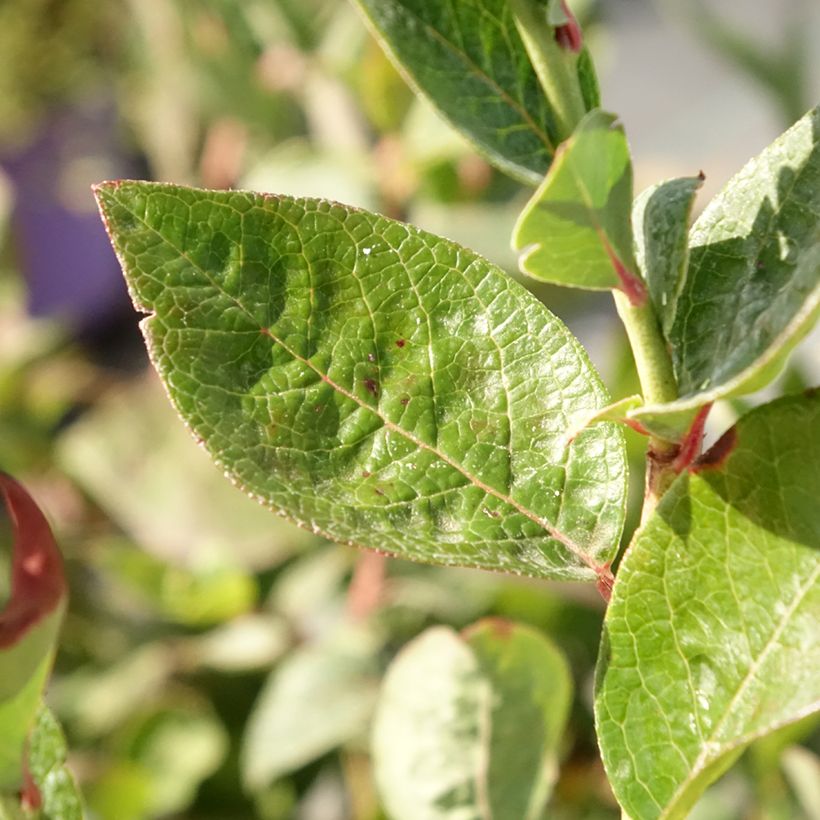

Plant habit
Fruit
Flowering
Foliage
Botanical data
Vaccinium
corymbosum
Blues Brothers®
Ericaceae
Highbush Blueberry, Blueberry
Cultivar or hybrid
Other Blueberry bush
View all →Planting and care
Plant the Bluesbrothers Blueberry Bush in autumn or all year round except during frost and heat waves. This bush is planted in partial shade, at the edge of a woodland, in a clear understory or in an east-facing location, without direct sunlight. It is very hardy (down to -30°C for the plant but -5°C for the flowers) and will grow without difficulty if the soil and exposure suit it. If you plant multiple plants, space them 0.80m apart in all directions.
Plant it in a very acidic to acidic soil (pH between 4 and 6), incorporating ericaceous soil or a mixture of ordinary soil and peat or well-decomposed bark compost. The collar should be level with the ground. Firmly tamp down and water generously, with non-limestone water. In slightly alkaline to neutral soil, dig a hole 50 to 60 cm deep, line the edges with a garden felt, then fill with a mixture of compost and ericaceous soil. The blueberry bush tolerates periodically waterlogged soils, for example on the banks of water points.
The soil should remain moist to wet. If watering is necessary, it should be done with non-limestone and non-chlorinated water (such as rainwater). Mulch the base with shredded bark, straw, or fern leaves. It is sometimes useful to place a protective net if birds become too greedy during harvest. Apply a little well-rotted compost on the surface every spring. The blueberry bush is not very susceptible to diseases and pests.
For Container Gardening: plant in a mixture of ericaceous soil and potting soil, creating a drainage layer at the bottom of the perforated pot. Feed your blueberry bush with compost or fertiliser for small fruits and water regularly to keep the substrate slightly moist, but not waterlogged.
Planting period
Intended location
Care
Planting & care advice
This item has not been reviewed yet - be the first to leave a review about it.
Similar products
Haven't found what you were looking for?
Hardiness is the lowest winter temperature a plant can endure without suffering serious damage or even dying. However, hardiness is affected by location (a sheltered area, such as a patio), protection (winter cover) and soil type (hardiness is improved by well-drained soil).

Photo Sharing Terms & Conditions
In order to encourage gardeners to interact and share their experiences, Promesse de fleurs offers various media enabling content to be uploaded onto its Site - in particular via the ‘Photo sharing’ module.
The User agrees to refrain from:
- Posting any content that is illegal, prejudicial, insulting, racist, inciteful to hatred, revisionist, contrary to public decency, that infringes on privacy or on the privacy rights of third parties, in particular the publicity rights of persons and goods, intellectual property rights, or the right to privacy.
- Submitting content on behalf of a third party;
- Impersonate the identity of a third party and/or publish any personal information about a third party;
In general, the User undertakes to refrain from any unethical behaviour.
All Content (in particular text, comments, files, images, photos, videos, creative works, etc.), which may be subject to property or intellectual property rights, image or other private rights, shall remain the property of the User, subject to the limited rights granted by the terms of the licence granted by Promesse de fleurs as stated below. Users are at liberty to publish or not to publish such Content on the Site, notably via the ‘Photo Sharing’ facility, and accept that this Content shall be made public and freely accessible, notably on the Internet.
Users further acknowledge, undertake to have ,and guarantee that they hold all necessary rights and permissions to publish such material on the Site, in particular with regard to the legislation in force pertaining to any privacy, property, intellectual property, image, or contractual rights, or rights of any other nature. By publishing such Content on the Site, Users acknowledge accepting full liability as publishers of the Content within the meaning of the law, and grant Promesse de fleurs, free of charge, an inclusive, worldwide licence for the said Content for the entire duration of its publication, including all reproduction, representation, up/downloading, displaying, performing, transmission, and storage rights.
Users also grant permission for their name to be linked to the Content and accept that this link may not always be made available.
By engaging in posting material, Users consent to their Content becoming automatically accessible on the Internet, in particular on other sites and/or blogs and/or web pages of the Promesse de fleurs site, including in particular social pages and the Promesse de fleurs catalogue.
Users may secure the removal of entrusted content free of charge by issuing a simple request via our contact form.
The flowering period indicated on our website applies to countries and regions located in USDA zone 8 (France, the United Kingdom, Ireland, the Netherlands, etc.)
It will vary according to where you live:
- In zones 9 to 10 (Italy, Spain, Greece, etc.), flowering will occur about 2 to 4 weeks earlier.
- In zones 6 to 7 (Germany, Poland, Slovenia, and lower mountainous regions), flowering will be delayed by 2 to 3 weeks.
- In zone 5 (Central Europe, Scandinavia), blooming will be delayed by 3 to 5 weeks.
In temperate climates, pruning of spring-flowering shrubs (forsythia, spireas, etc.) should be done just after flowering.
Pruning of summer-flowering shrubs (Indian Lilac, Perovskia, etc.) can be done in winter or spring.
In cold regions as well as with frost-sensitive plants, avoid pruning too early when severe frosts may still occur.
The planting period indicated on our website applies to countries and regions located in USDA zone 8 (France, United Kingdom, Ireland, Netherlands).
It will vary according to where you live:
- In Mediterranean zones (Marseille, Madrid, Milan, etc.), autumn and winter are the best planting periods.
- In continental zones (Strasbourg, Munich, Vienna, etc.), delay planting by 2 to 3 weeks in spring and bring it forward by 2 to 4 weeks in autumn.
- In mountainous regions (the Alps, Pyrenees, Carpathians, etc.), it is best to plant in late spring (May-June) or late summer (August-September).
The harvesting period indicated on our website applies to countries and regions in USDA zone 8 (France, England, Ireland, the Netherlands).
In colder areas (Scandinavia, Poland, Austria...) fruit and vegetable harvests are likely to be delayed by 3-4 weeks.
In warmer areas (Italy, Spain, Greece, etc.), harvesting will probably take place earlier, depending on weather conditions.
The sowing periods indicated on our website apply to countries and regions within USDA Zone 8 (France, UK, Ireland, Netherlands).
In colder areas (Scandinavia, Poland, Austria...), delay any outdoor sowing by 3-4 weeks, or sow under glass.
In warmer climes (Italy, Spain, Greece, etc.), bring outdoor sowing forward by a few weeks.































